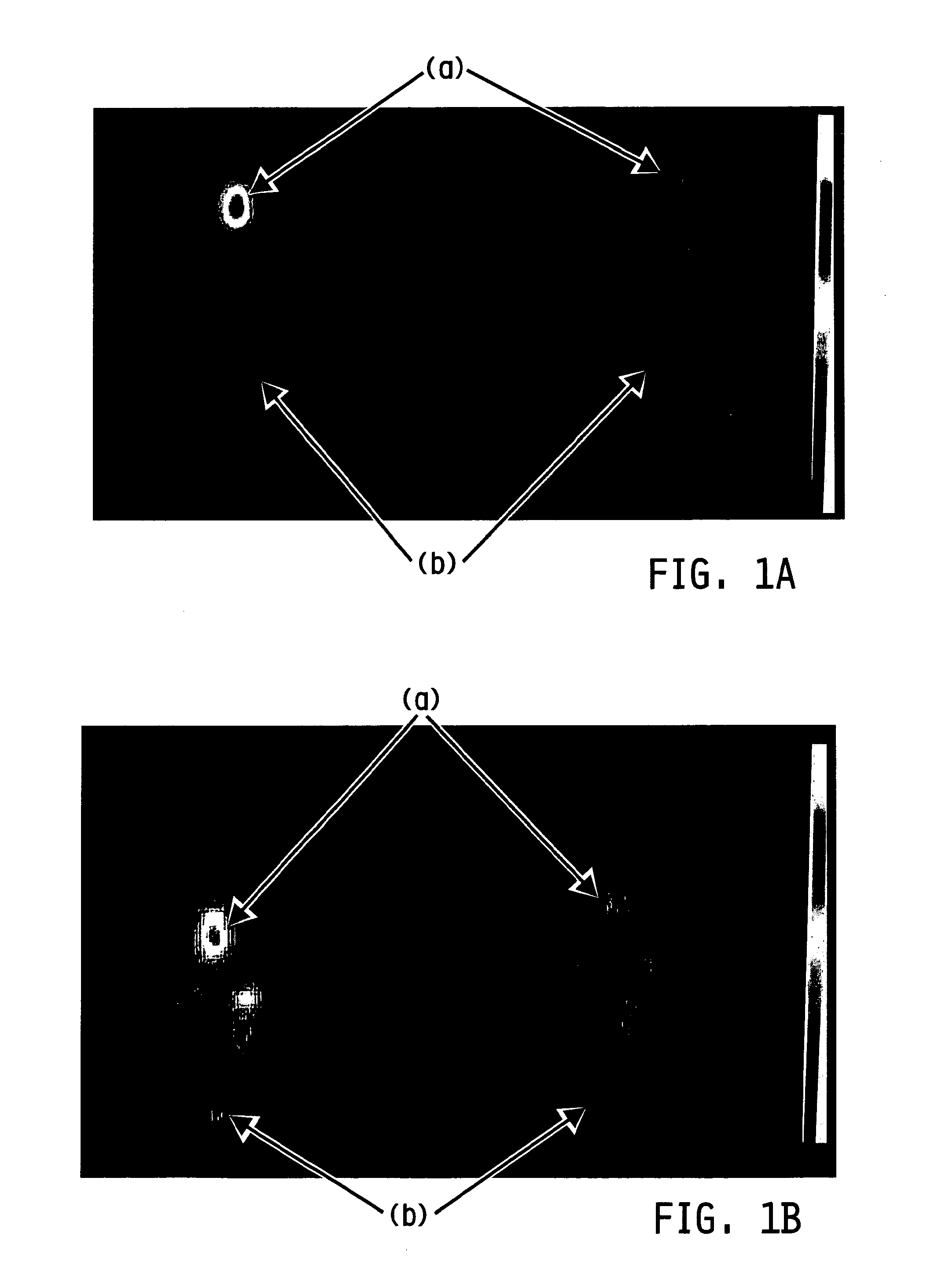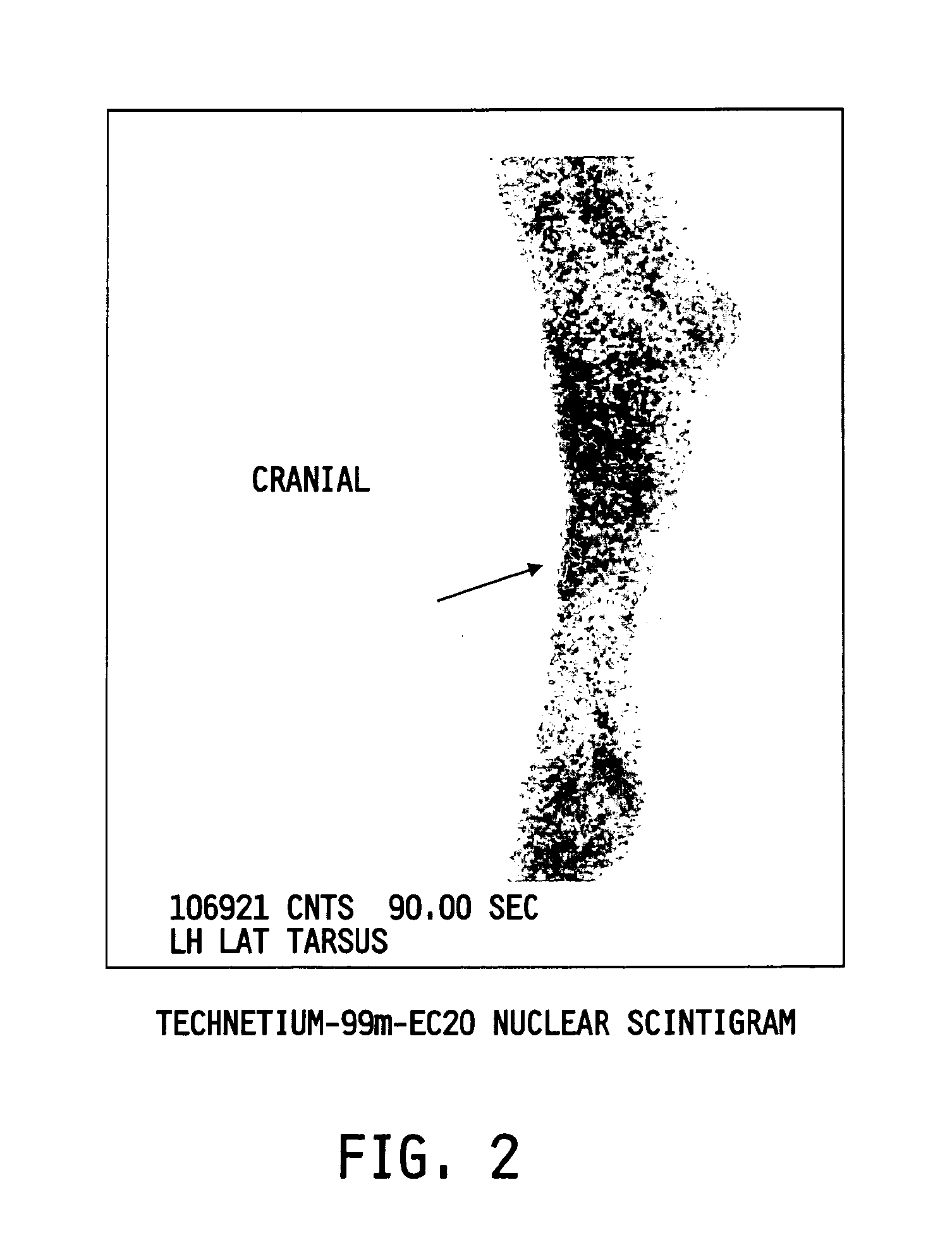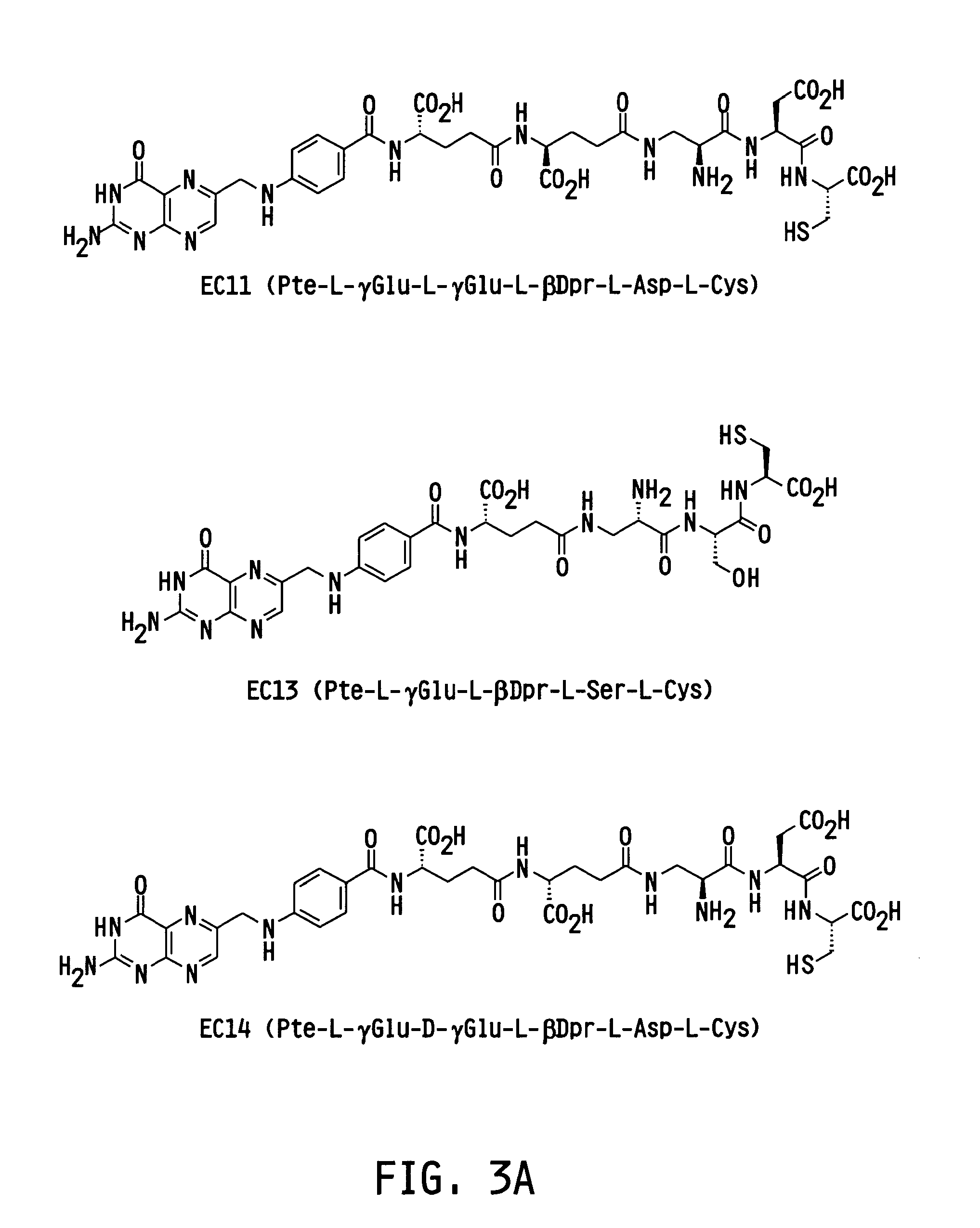Method of imaging localized infections
a localized infection and imaging technology, applied in the field of localized infection imaging, can solve the problems of inability to identify the location and/or the extent of infection in the site of localized infection, the infection can damage the host tissue, and the conventional method of diagnosis cannot solve the problem of chronic infection,
- Summary
- Abstract
- Description
- Claims
- Application Information
AI Technical Summary
Benefits of technology
Problems solved by technology
Method used
Image
Examples
example 1
Materials
[0077]EC-20 (a folate-linked chelator of 99mTc), was obtained from Endocyte Inc. (West Lafayette, Ind.). EC-20, a low molecular weight (745.2 Da) folate based chelating agent, possesses and rapid radioactive labeling, high binding affinity (Kd˜3 nM) to its target receptor, rapid clearance (I.V. plasma t1 / 2˜4 min), and has minimal side effects. The conjugate consists of a folate targeting ligand tethered to a peptide chelating moiety via a short 2 carbon spacer (FIG. 4). After simple on-site 99mTc labeling, EC-20 imaging can be accomplished in as little as 4 h post injection making this diagnostic agent highly amenable to most clinical settings.
[0078]99mTc-labeled sodium pertechnetate was purchased from Cardinal Health Services (Indianapolis, Ind.). Folic acid and Sephadex G-10 beads were purchased from Sigma / Aldrich (St. Louis, Mo.). Tryptic soy agar (BD 236950) and tryptic soy broth (BD 211825) were purchased from Becton, Dickinson and Company (Franklin Lakes, N.J.). Staph...
example 2
Maintenance of Bacterial Cultures
[0079]Staphylococcus aureus (S. aureus) BAA-934 was propagated according to the protocol supplied by the American Type Culture Collection (ATCC). Briefly, cultures were grown on tryptic soy agar plates or in broth at 37° C. for 24 hours. Tryptic soy culture plates were stored at 2-5° C. for further use. Bacterial enumeratation was based on OD600 measurements. Bacteria were grown to an OD600 of about 1 to about 2 overnight and used directly in tryptic soy broth. Proper Biosafety level 2 guidelines were followed in accordance with CDC and Purdue Biosafety protocols.
example 3
Animal Models of S. Aureus Infection
[0080]Infection was induced in either the cuadal muscular (thigh) or flank region in Balb / c (˜20 g) mice as previously described. See Bettegowda, et al. Proc. Natl. Acad. Sci. U.S.A., vol. 102, pp. 1145-1150 (2005) and Bunce, et al. Infect. Immun., vol. 60, pp. 2636-2640 (1992), each incorporated herein by reference. Briefly, on day one, about 2.5×106 CFU to about 1×107 CFU (based on optical density) of S. aureus in 50 μL in tryptic soy broth containing 0.08 g / mL G10 Sephadex beads was injected in the posterior right caudal muscular region (thigh) of the mouse. For induction of the flank model, 107 CFU in 200 μL of tryptic soy agar (containing 0.08 g / mL G10 Sephadex beads) was injected subcutaneously in the right flank. Animals developed abscesses detectable as palpable masses within 24-48 h after inoculation. Animals were given ad libitum access to standard mouse chow and water throughout the course of the study and monitored on a daily basis to ...
PUM
| Property | Measurement | Unit |
|---|---|---|
| distance | aaaaa | aaaaa |
| distance | aaaaa | aaaaa |
| distance | aaaaa | aaaaa |
Abstract
Description
Claims
Application Information
 Login to View More
Login to View More - R&D
- Intellectual Property
- Life Sciences
- Materials
- Tech Scout
- Unparalleled Data Quality
- Higher Quality Content
- 60% Fewer Hallucinations
Browse by: Latest US Patents, China's latest patents, Technical Efficacy Thesaurus, Application Domain, Technology Topic, Popular Technical Reports.
© 2025 PatSnap. All rights reserved.Legal|Privacy policy|Modern Slavery Act Transparency Statement|Sitemap|About US| Contact US: help@patsnap.com



